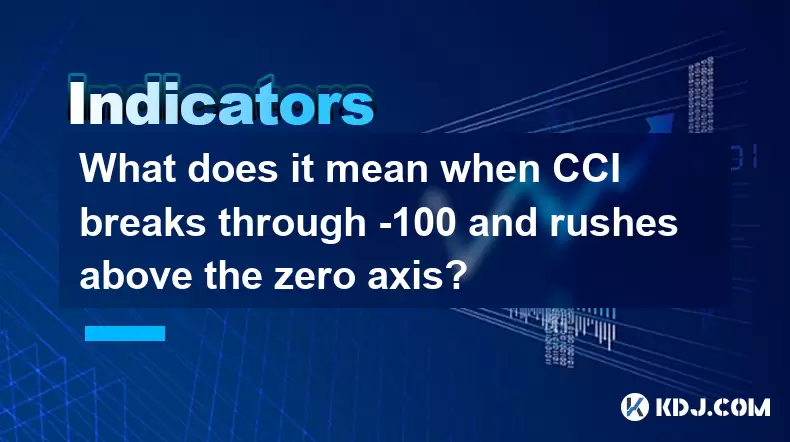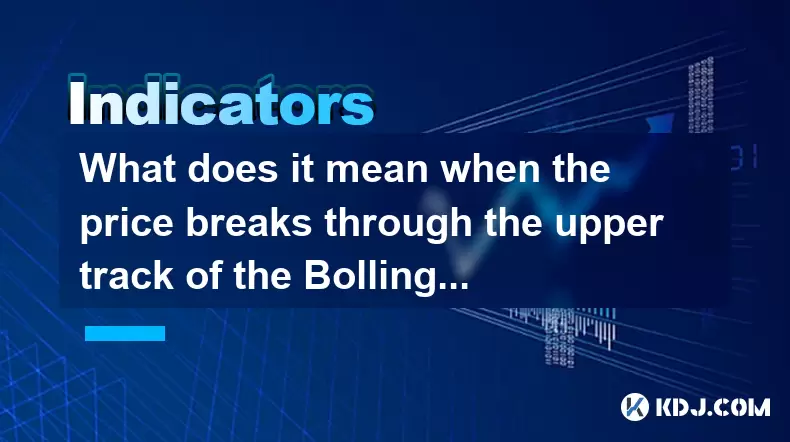-
 Bitcoin
Bitcoin $117500
-0.66% -
 Ethereum
Ethereum $3760
-1.24% -
 XRP
XRP $3.087
-2.54% -
 Tether USDt
Tether USDt $0.9999
-0.01% -
 BNB
BNB $803.6
-4.03% -
 Solana
Solana $180.3
-4.15% -
 USDC
USDC $0.9998
-0.01% -
 Dogecoin
Dogecoin $0.2218
-4.92% -
 TRON
TRON $0.3366
3.71% -
 Cardano
Cardano $0.7785
-3.73% -
 Hyperliquid
Hyperliquid $42.90
-4.75% -
 Sui
Sui $3.797
-7.45% -
 Stellar
Stellar $0.4165
-2.32% -
 Chainlink
Chainlink $17.65
-4.17% -
 Bitcoin Cash
Bitcoin Cash $561.0
-3.86% -
 Hedera
Hedera $0.2611
-4.54% -
 Avalanche
Avalanche $24.33
-7.02% -
 UNUS SED LEO
UNUS SED LEO $8.972
0.06% -
 Litecoin
Litecoin $107.6
-2.79% -
 Toncoin
Toncoin $3.254
-1.84% -
 Shiba Inu
Shiba Inu $0.00001306
-4.69% -
 Ethena USDe
Ethena USDe $1.001
0.00% -
 Uniswap
Uniswap $10.10
-4.83% -
 Polkadot
Polkadot $3.902
-4.63% -
 Monero
Monero $315.1
-2.57% -
 Dai
Dai $1.000
0.02% -
 Bitget Token
Bitget Token $4.499
-2.53% -
 Pepe
Pepe $0.00001145
-7.38% -
 Cronos
Cronos $0.1479
6.07% -
 Aave
Aave $281.3
-4.07%
What does it mean when CCI breaks through -100 and rushes above the zero axis?
When the CCI breaks above -100 and crosses the zero line, it signals strengthening bullish momentum, often marking a potential reversal from oversold conditions in crypto markets.
Jul 29, 2025 at 02:35 pm

Understanding the Commodity Channel Index (CCI) in Cryptocurrency Trading
The Commodity Channel Index (CCI) is a momentum-based oscillator widely used in cryptocurrency trading to identify overbought and oversold conditions, as well as potential trend reversals. Originally developed for commodities, the CCI has proven effective in analyzing digital asset price movements due to their volatile nature. The indicator fluctuates around a zero line and typically ranges between -100 and +100 under normal market conditions. When the CCI breaks through -100 and rushes above the zero axis, it signals a significant shift in market momentum. This movement is closely watched by traders as it may indicate the end of a downtrend and the beginning of a new bullish phase.
Interpreting the Breakthrough Below -100
A CCI value dropping below -100 is generally interpreted as an oversold condition. In the context of cryptocurrency markets, this often occurs after a prolonged or sharp decline in price, driven by panic selling, negative news, or broader market corrections. When the CCI remains below -100 for several periods, it suggests that downward momentum is strong and sustained. However, such extreme readings can also indicate that the asset may be oversold, setting the stage for a potential reversal. Traders monitor this zone carefully, as a sustained period below -100 followed by a breakout can be a powerful signal.
Significance of the Zero Axis Cross
The moment the CCI crosses above the zero axis from below is considered a critical turning point. This transition indicates that the average price is now above its statistical mean, and upward momentum is beginning to dominate. In cryptocurrency trading, where trends can emerge rapidly, this crossover often coincides with increased buying pressure. It reflects a shift in market sentiment from bearish to neutral or potentially bullish. The speed at which the CCI moves from below -100 to above zero adds weight to the signal—a rapid surge suggests strong conviction among buyers.
Practical Steps to Confirm the Signal
To effectively act on a CCI breakout from below -100 to above zero, traders should follow a structured verification process:
- Check the time frame: Ensure the signal appears on a higher time frame (such as 4-hour or daily) to avoid false signals from market noise on lower intervals.
- Confirm with price action: Look for bullish candlestick patterns such as hammer, bullish engulfing, or morning star near the time of the CCI crossover.
- Validate with volume: A spike in trading volume during the CCI rise supports the legitimacy of the momentum shift.
- Use additional indicators: Pair the CCI with tools like moving averages (e.g., 50-day and 200-day) or Relative Strength Index (RSI) to confirm trend direction and momentum.
- Monitor support levels: Ensure the price has stabilized near a known support zone, such as a previous swing low or Fibonacci retracement level.
Trading Strategies Based on CCI Breakouts
When the CCI breaks through -100 and ascends past the zero line, several tactical approaches can be employed:
- Entry on retest: Wait for the price to retest the zero crossover zone after the initial breakout. This provides a lower-risk entry point with confirmation of sustained momentum.
- Stop-loss placement: Set a stop-loss just below the recent swing low or below the point where the CCI first exited the -100 zone to manage downside risk.
- Take-profit targets: Use measured moves based on recent price swings or Fibonacci extensions. For example, if the prior downtrend spanned $10, a reasonable target might be $10 above the reversal point.
- Position sizing: Allocate capital based on volatility—cryptocurrencies with higher volatility may warrant smaller position sizes to account for potential slippage and sudden reversals.
Common Pitfalls and How to Avoid Them
While the CCI breakout signal is powerful, it is not infallible. False signals can occur, especially during sideways or choppy market conditions. To mitigate risks:
- Avoid trading during low-volume periods, such as weekends or holidays, when price movements may lack follow-through.
- Do not rely solely on CCI—combine it with other technical and on-chain metrics like exchange inflows/outflows or whale wallet activity for a more comprehensive view.
- Be cautious of divergence: If the price makes a new low but the CCI fails to break below -100, it may indicate weakening bearish momentum, but this doesn’t guarantee an immediate reversal.
- Adjust settings carefully: The default CCI period is 20, but some traders modify it to 14 or 25 based on the asset’s volatility. Changing the period alters sensitivity and can generate premature signals if not calibrated properly.
Frequently Asked Questions
What time frame is best for observing CCI breakouts in crypto?
The daily chart is often preferred for identifying high-probability CCI breakouts, as it filters out short-term noise. However, active traders may use the 4-hour chart to catch earlier entries, provided they confirm the signal with higher time frame alignment.
Can CCI be used for altcoins as effectively as for Bitcoin?
Yes, CCI works well for altcoins, especially those with sufficient liquidity and volatility. However, low-cap altcoins with erratic price action may generate misleading signals. Always cross-verify with volume and market context.
Does a CCI move from -100 to zero guarantee a bullish trend?
No, it does not guarantee a trend. It indicates increasing bullish momentum, but confirmation through price structure and volume is essential. Markets can still reverse if broader sentiment remains negative.
How do I adjust CCI settings for different cryptocurrencies?
Start with the standard 20-period setting. For highly volatile coins like meme tokens, consider using a slightly longer period (e.g., 25) to reduce false signals. Backtest adjustments on historical data to evaluate performance before live trading.
Disclaimer:info@kdj.com
The information provided is not trading advice. kdj.com does not assume any responsibility for any investments made based on the information provided in this article. Cryptocurrencies are highly volatile and it is highly recommended that you invest with caution after thorough research!
If you believe that the content used on this website infringes your copyright, please contact us immediately (info@kdj.com) and we will delete it promptly.
- Bitcoin Price Drop: Navigating the Dip with Corporate Strategies
- 2025-07-30 07:30:12
- BNB's Bullish Cycle: ChatGPT Weighs In on the Future
- 2025-07-30 06:50:12
- XRP's Wild Ride: Open Interest, Price Crash Fears, and What's Next
- 2025-07-30 07:50:12
- SEC Greenlights In-Kind Creations: A Game Changer for Bitcoin ETPs?
- 2025-07-30 07:50:12
- Arbitrum (ARB) Price Prediction: Navigating the Ups and Downs of the Best ETH Eco
- 2025-07-30 06:50:12
- Ethereum, Ruvi AI, Presale: The Next Big Thing in Crypto?
- 2025-07-30 07:30:12
Related knowledge

What does it mean when the EMA combination crosses upward for the first time after sideways trading?
Jul 28,2025 at 03:43pm
Understanding the EMA and Its Role in Technical AnalysisThe Exponential Moving Average (EMA) is a widely used technical indicator in cryptocurrency tr...

What does it mean when the price breaks through the upper track of the Bollinger Band but the RSI is overbought?
Jul 30,2025 at 03:35am
Understanding Bollinger Bands and Their Upper TrackBollinger Bands are a widely used technical analysis tool developed by John Bollinger. They consist...

What signal does the ROC send when it rises rapidly from a low level and breaks through the zero axis?
Jul 27,2025 at 10:15am
Understanding the Rate of Change (ROC) IndicatorThe Rate of Change (ROC) is a momentum-based oscillator used in technical analysis to measure the perc...

What does it mean when the moving averages are glued together and a gap appears?
Jul 29,2025 at 07:49pm
Understanding Moving Averages in Cryptocurrency TradingMoving averages are among the most widely used technical indicators in the cryptocurrency tradi...

What does it mean when TEMA breaks through the long-term downward trend line?
Jul 29,2025 at 02:50pm
Understanding the Role of Smart Contracts in Decentralized Finance (DeFi)Smart contracts are self-executing agreements with the terms of the agreement...

What does it mean when the price breaks through the double bottom neckline and the moving averages are arranged in a bullish pattern?
Jul 28,2025 at 10:57am
Understanding the Double Bottom PatternThe double bottom is a widely recognized reversal chart pattern in technical analysis, particularly within the ...

What does it mean when the EMA combination crosses upward for the first time after sideways trading?
Jul 28,2025 at 03:43pm
Understanding the EMA and Its Role in Technical AnalysisThe Exponential Moving Average (EMA) is a widely used technical indicator in cryptocurrency tr...

What does it mean when the price breaks through the upper track of the Bollinger Band but the RSI is overbought?
Jul 30,2025 at 03:35am
Understanding Bollinger Bands and Their Upper TrackBollinger Bands are a widely used technical analysis tool developed by John Bollinger. They consist...

What signal does the ROC send when it rises rapidly from a low level and breaks through the zero axis?
Jul 27,2025 at 10:15am
Understanding the Rate of Change (ROC) IndicatorThe Rate of Change (ROC) is a momentum-based oscillator used in technical analysis to measure the perc...

What does it mean when the moving averages are glued together and a gap appears?
Jul 29,2025 at 07:49pm
Understanding Moving Averages in Cryptocurrency TradingMoving averages are among the most widely used technical indicators in the cryptocurrency tradi...

What does it mean when TEMA breaks through the long-term downward trend line?
Jul 29,2025 at 02:50pm
Understanding the Role of Smart Contracts in Decentralized Finance (DeFi)Smart contracts are self-executing agreements with the terms of the agreement...

What does it mean when the price breaks through the double bottom neckline and the moving averages are arranged in a bullish pattern?
Jul 28,2025 at 10:57am
Understanding the Double Bottom PatternThe double bottom is a widely recognized reversal chart pattern in technical analysis, particularly within the ...
See all articles

























































































